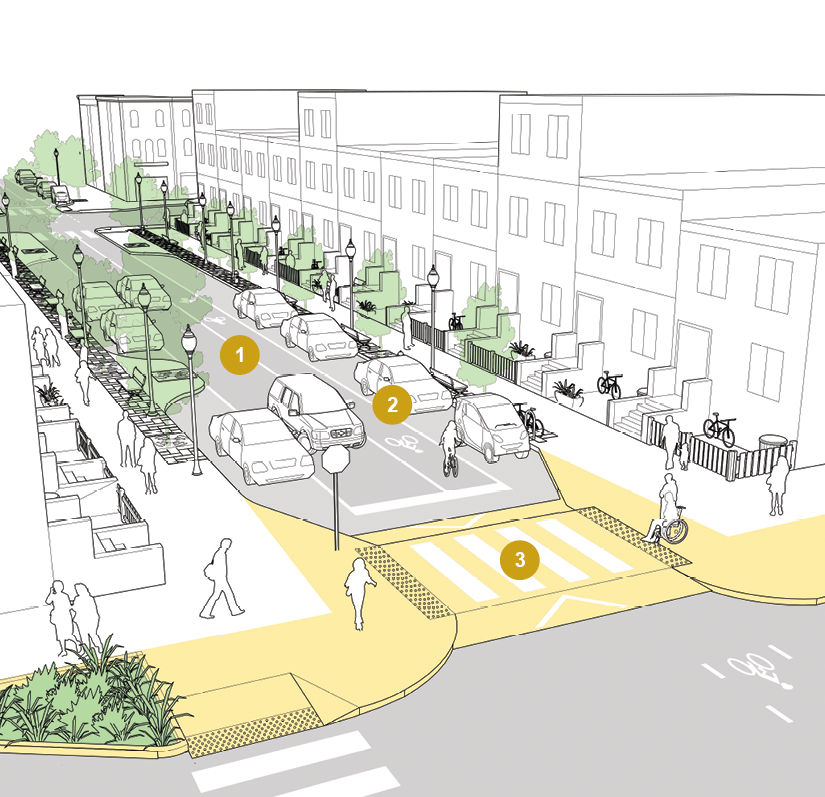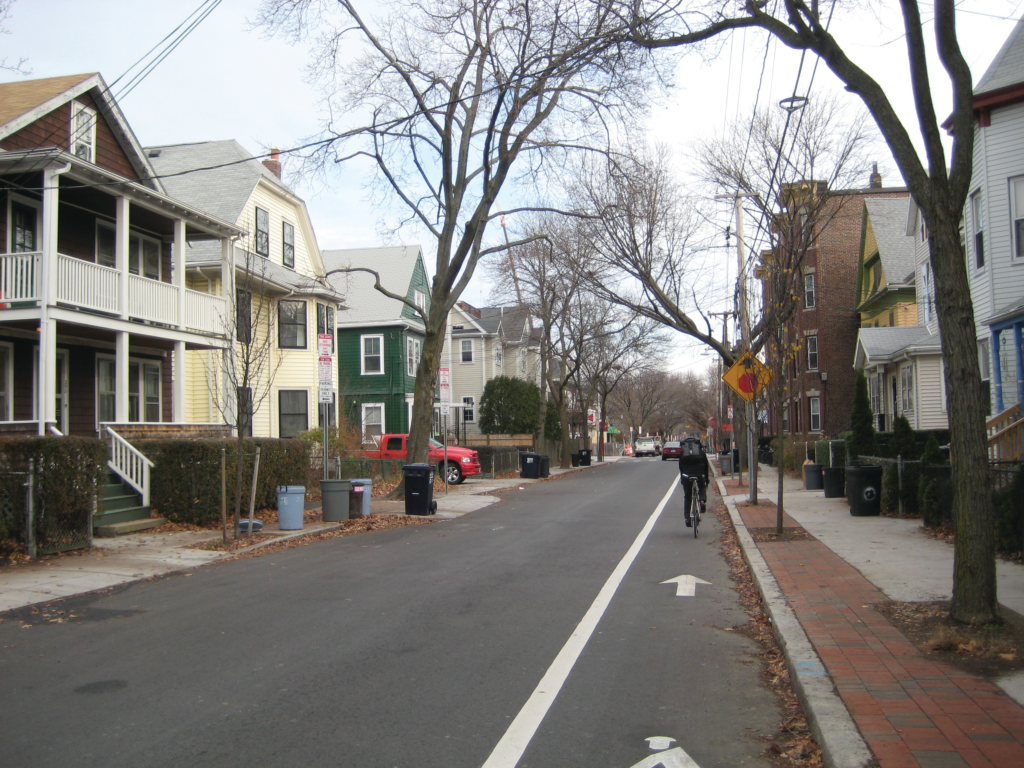Local streets in residential neighborhoods are often underutilized as spaces for play and leisure. These streets should provide safe and inviting places to walk with direct access to local stores and schools. Design for local streets can combine stormwater management features, curb extensions, vertical speed control elements, and bicycle facilities that encourage safe speeds and meter through traffic.
Recommendations

1On 1-way neighborhood streets, travel lanes may be striped to narrow the perceived width of the roadway. An undifferentiated traveled way encourages higher speeds. Crash rates have been shown to increase as lane width increases.
2Left-side bike lanes reduce the risk of dooring conflicts and are an effective treatment for most neighborhood streets.
3Raised crosswalks or curb extensions maintain safe travel speeds and reinforce the residential nature of the street.1

Bike lanes narrow this residential street and serve as a valuable low-volume route for commuters.
- Raised crosswalks have been shown to increase motorists’ yield rate by as much as 45%.
“Raised Pedestrian Crosswalks,” Safe Routes to Schools Guide (Safe Routes to School, 2012). ↩︎